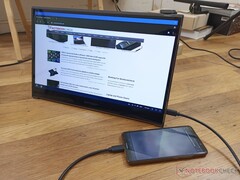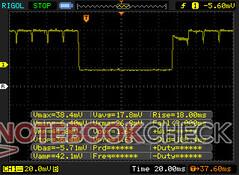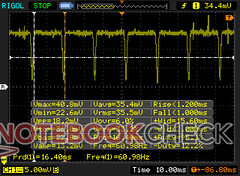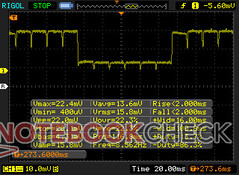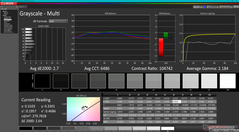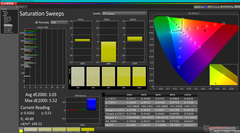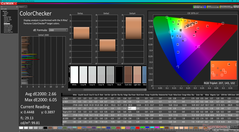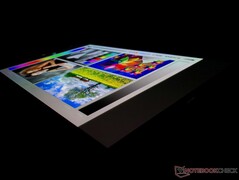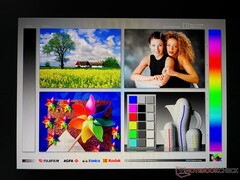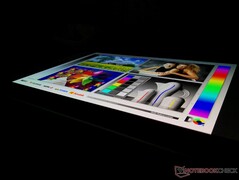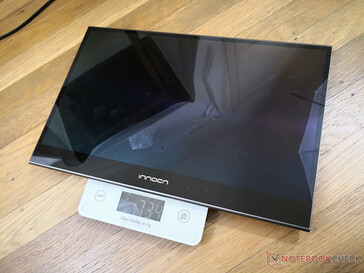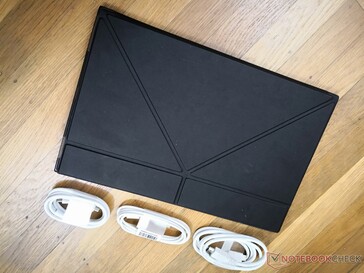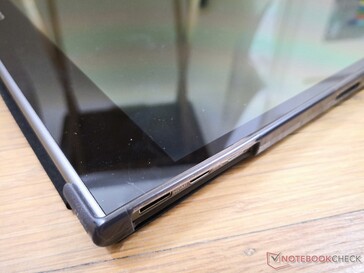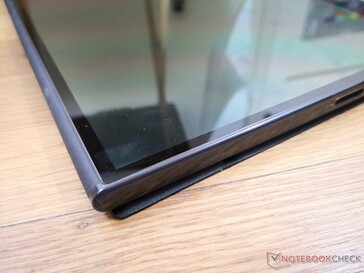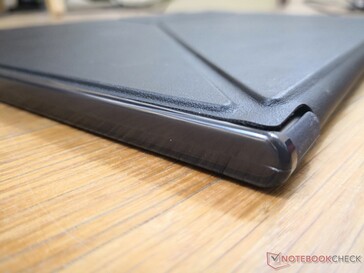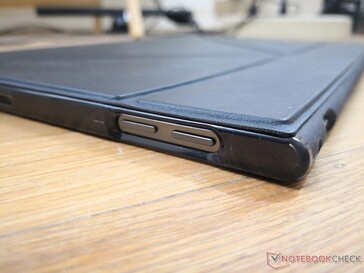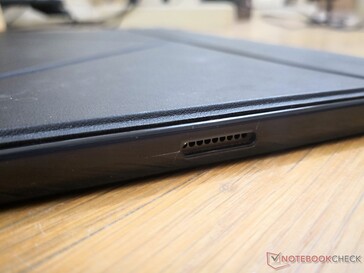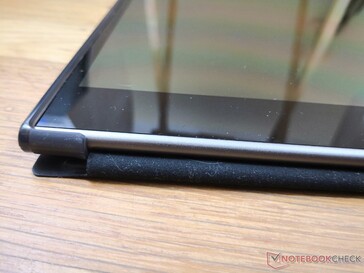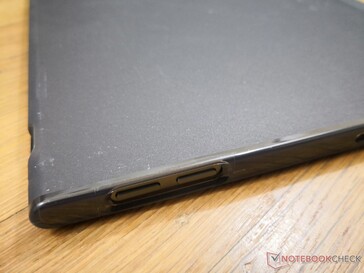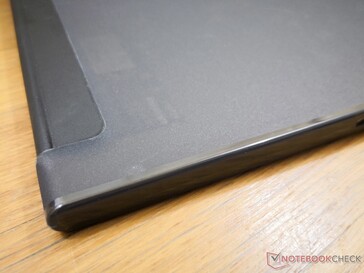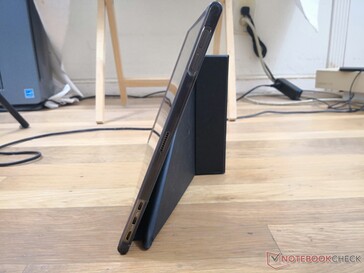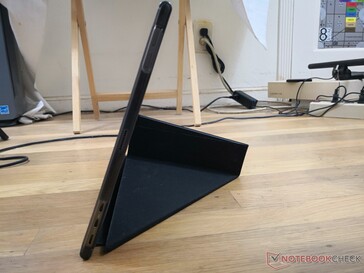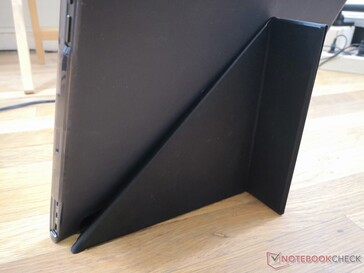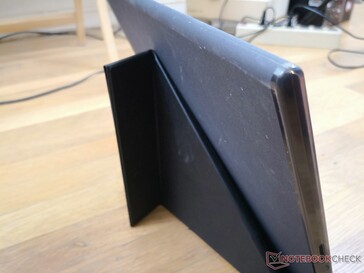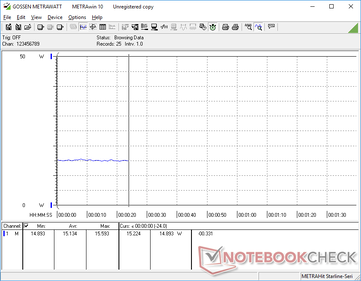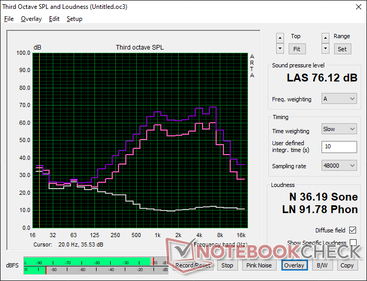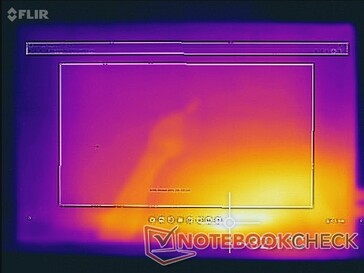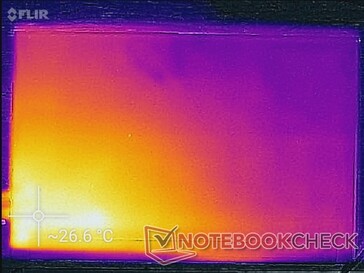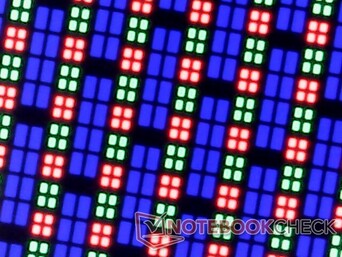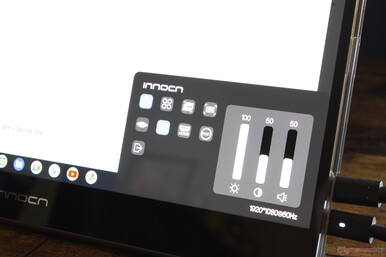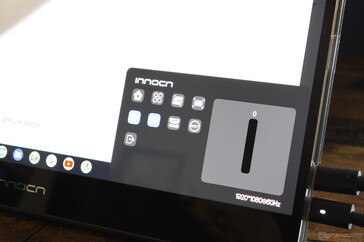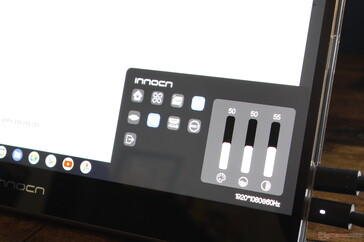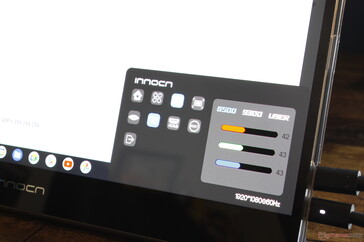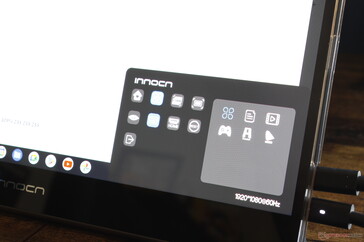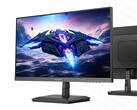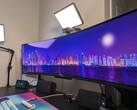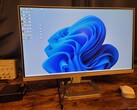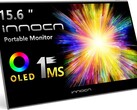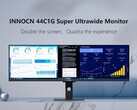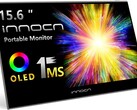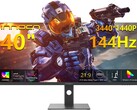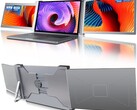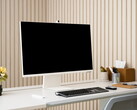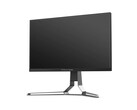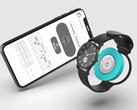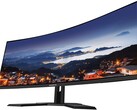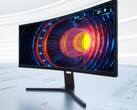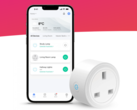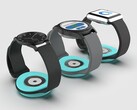Amazon is now shipping the Innocn 15.6-inch OLED portable monitor for $300 USD or just $270 after applying the current coupon code at checkout. The monitor is notable for being one of the very few 15.6-inch portable monitors based on OLED instead of the usual IPS for nearly perfect black levels and full DCI-P3 coverage. The manufacturer has sent us a sample unit for our honest impressions.
Before we get to what we like about the monitor, there are a few notable disadvantages that potential buyers should first know about. For one, the packaging includes no AC adapter meaning that you'll either need to have a separate USB-C AC adapter of your own or use one of the two USB-C to USB-C cables in the box for both DisplayPort and Power. The problem with the latter is that this will limit the maximum brightness of the display to just the 20 percent mark or 89 nits. If you want to reach 100 percent brightness or 282 nits, then you'll need to have two cables attached to the monitor simultaneously: one dedicated for power and one dedicated for video. This can be a hassle when traveling as you'll need to carry two cables with you at all times to fully exploit the benefits of the monitor.
| |||||||||||||||||||||||||
Brightness Distribution: 97 %
Contrast: ∞:1 (Black: 0 cd/m²)
ΔE ColorChecker Calman: 2.66 | ∀{0.5-29.43 Ø4.82}
ΔE Greyscale Calman: 2.7 | ∀{0.09-98 Ø5.1}
96.9% AdobeRGB 1998 (Argyll 3D)
100% sRGB (Argyll 3D)
99.9% Display P3 (Argyll 3D)
Gamma: 2.18
CCT: 6486 K
Secondly, the display is not touchscreen despite it having a glossy glass overlay that looks as if it may be touch-enabled. Navigating through the OSD with the three physical buttons along the top corner of the unit is therefore cumbersome. Many other portable monitors like the Vissles-M or Ananta support touch for easier inputs especially if connecting smartphones or tablets.
Lastly, we're unable to reach the advertised maximum brightness of 400 nits as our recorded maximum is only 282 nits even when the brightness setting is at 100 percent with our Dell USB-C AC adapter. Though independent measurements are usually dimmer than advertised, this delta is nonetheless much wider than we had anticipated. At least we can independently confirm the full DCI-P3 coverage.
Another minor setback includes the weak audio which is limited to just 50 percent if the monitor is not powered by a separate AC adapter. Even when set to 100 percent, however, volume is weak at just 76 dB(A). You may want to carry earbuds or headphones if you care about the audio experience.
Specifications:
- Screen Size: 15.6-inch
- Screen Type: OLED
- Native Resolution: 1920 x 1080
- Advertised Brightness: 400 nits
- Touchscreen: No
- Speakers: 2x 1 W
- Native Refresh Rate: 60 Hz
- Display Colors: 1074M (8-bit +2 FRC)
- Contrast: 100000:1
- Digital Input: 2x Type-C, 1x Mini-HDMI
- Dimensions: 358 x 233 x 7 mm
- Advertised Weight: 730 g
- Voltage Rating: DC 20 V, 1.5 A
| Innocn 15K1F Portable Monitor 1920x1080, 15.6" | GMK KD2 Portable Monitor 3840x2160, 15.6" | Vissles Monitor 15.6 1920x1080, 15.6" | Ananta 17.3-inch Touchscreen Portable Monitor RTK3B3A, , 1920x1080, 17.3" | AirTab Portable Monitor 15.6-inch 1920x1080, 15.6" | MEMTEQ Type-C Portable Monitor Z1 1920x1080, 15.6" | Auzai ME16Z01 Portable Monitor 1920x1080, 15.6" | |
|---|---|---|---|---|---|---|---|
| Display | -2% | -46% | -14% | -52% | -50% | -42% | |
| Display P3 Coverage | 99.9 | 92.3 -8% | 47.33 -53% | 78.8 -21% | 40.72 -59% | 42.03 -58% | 48.53 -51% |
| sRGB Coverage | 100 | 100 0% | 66.4 -34% | 100 0% | 61 -39% | 63.2 -37% | 72 -28% |
| AdobeRGB 1998 Coverage | 96.9 | 100 3% | 48.6 -50% | 77.6 -20% | 42.11 -57% | 43.44 -55% | 50.2 -48% |
| Response Times | -2327% | -1845% | -1576% | -1609% | -2311% | -1551% | |
| Response Time Grey 50% / Grey 80% * | 1.8 ? | 55.6 ? -2989% | 41.2 ? -2189% | 38.4 ? -2033% | 36 ? -1900% | 52 ? -2789% | 38.8 ? -2056% |
| Response Time Black / White * | 2.2 ? | 38.8 ? -1664% | 35.2 ? -1500% | 26.8 ? -1118% | 31.2 ? -1318% | 42.5 ? -1832% | 25.2 ? -1045% |
| PWM Frequency | 61 ? | 2451 ? | 1000 ? | 24510 ? | 1042 ? | 1000 ? | 201.6 ? |
| Screen | -31% | -92% | -44% | -57% | -83% | -140% | |
| Brightness middle | 282.2 | 415.1 47% | 248.1 -12% | 244.6 -13% | 206.5 -27% | 198 -30% | 300.7 7% |
| Brightness | 284 | 412 45% | 237 -17% | 231 -19% | 198 -30% | 198 -30% | 267 -6% |
| Brightness Distribution | 97 | 91 -6% | 91 -6% | 88 -9% | 88 -9% | 85 -12% | 77 -21% |
| Black Level * | 0.36 | 0.28 | 0.27 | 0.33 | 0.2 | 0.66 | |
| Colorchecker dE 2000 * | 2.66 | 5.93 -123% | 6.85 -158% | 3.7 -39% | 4.25 -60% | 6.9 -159% | 10.26 -286% |
| Colorchecker dE 2000 max. * | 6.05 | 8.64 -43% | 20.8 -244% | 9.36 -55% | 18.11 -199% | 15.9 -163% | 22.93 -279% |
| Greyscale dE 2000 * | 2.7 | 5.6 -107% | 5.8 -115% | 6.1 -126% | 3.1 -15% | 5.5 -104% | 9.5 -252% |
| Gamma | 2.18 101% | 2.18 101% | 2.34 94% | 2.24 98% | 2.31 95% | 1.59 138% | 1.51 146% |
| CCT | 6486 100% | 5820 112% | 6402 102% | 8089 80% | 6994 93% | 7310 89% | 8200 79% |
| Contrast | 1153 | 886 | 906 | 626 | 990 | 456 | |
| Colorchecker dE 2000 calibrated * | 1.48 | 5.69 | 3.08 | 4.08 | 4 | 5.05 | |
| Color Space (Percent of AdobeRGB 1998) | 42.8 | 69.8 | 38.7 | 40 | 45.8 | ||
| Color Space (Percent of sRGB) | 65.8 | 100 | 60.8 | 62.9 | 71.5 | ||
| Total Average (Program / Settings) | -787% /
-440% | -661% /
-398% | -545% /
-314% | -573% /
-338% | -815% /
-479% | -578% /
-370% |
* ... smaller is better
The rest of the monitor is thankfully excellent. The edge-to-edge glass overlay adds rigidity to the design for a stronger feel than the matte C-Force CF011S or M MEMTEQ. The removable folio case folds more easily and feels more secure as a stand than the folio cases for the M MEMTEQ or Auzai ME16Z01. The two USB-C ports are identical meaning either can be used for dedicated power, power passthrough, and/or video output unlike on the Ananta. There is also an integrated mini-HDMI port for connecting to older PCs that don't support USB-C. Such smaller details matter for travelers who intend to bring the Innocn monitor with them everywhere they go.
As for the OLED display, the Innocn is able to offer much deeper colors, blacker blacks, and faster black-white and gray-gray response times than most any competing portable IPS monitor. The latter attribute is especially noticeable since many other portable monitors tend to have very slow response times for more visible ghosting. By going with OLED, the Innocn monitor is more suited for gaming as any blurring is kept to a minimum. These attributes are amongst the top reasons for owning the Innocn OLED over the sea of IPS-based portable monitor options in the market.
If you can live with the minor annoyances mentioned above and can appreciate the advantages of OLED over IPS, then the Innocn 15K1F may be worth the investment. For simple web browsing or word processing where color accuracy and response times are not huge concerns, however, then a cheaper IPS-based monitor would work just as well.




